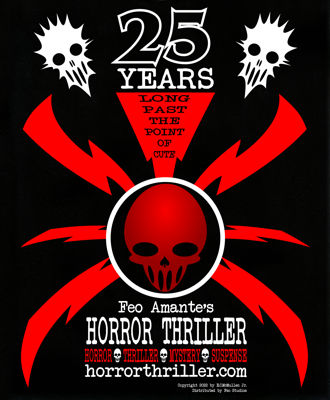 |
 |
Review by E.C. McMullen Jr. |
|
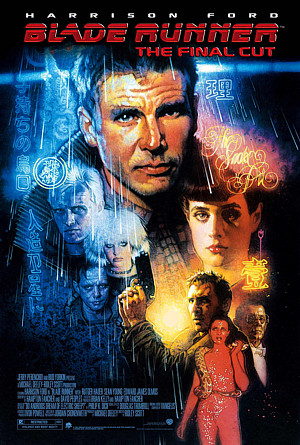
USA Release: October 5, 2007 Blade Runner Partnership, Sir Run Run Shaw, The Ladd Company, Warner Bros. Rated: USA: R |
|||
To recap: I tried to like the original BLADE RUNNER. I sincerely wanted to like it. There was a great story hidden in BLADE RUNNER, I just knew it, I could feel it. But ultimately I couldn't like it because it was such a botched job.
Director Ridley Scott (ALIEN, LEGEND, BLACK RAIN, HANNIBAL, PROMETHEUS, ALIEN: COVENANT) knew what he wanted, but the suits at Warner Bros. didn't "get" his vision. When the critics raved, the 1982 suits believed that the critics were really endorsing their version and not Ridley's.
Ridley didn't want to pull what would come to be known as a Lucas (though Spielberg did it too, to his CLOSE ENCOUNTERS OF THE THIRD KIND and E.T.). He didn't want to trash his movie up with the latest cgi lipstick. He only wanted to have the full and final edit due any director.
It would take Scott a lot of compromise, trial, error, and 25 years (of tracking down the prints, reels, and abandoned film strips) before he could bring his vision to the screen.
So let's forget about 1982 BLADE RUNNER. I'm going to tell you about BLADE RUNNER: The Final Director's Cut. In essence they are the same movie, yet an alternate history version of each other that makes them world's apart.
In doing so, I'm going to reveal why so much in movies today sucks so bad, and why hapless, helpless Hollywood believes their only future lies buried in their far more creative and visionary past.
- A time when a different generation were willing to take creative risks.
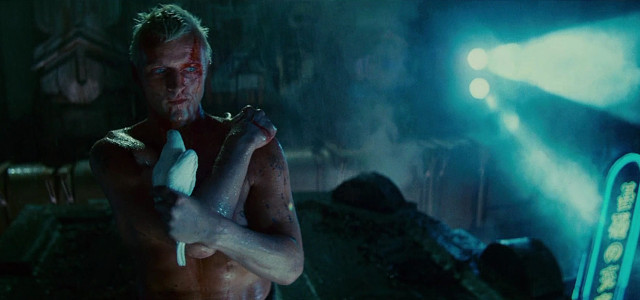
ORIGINAL SIN 1:
Unnecessary opening descriptor.
How much? The final cut, like the original theatrical release, opens with this text scrawl,
Early in the 21st Century, THE TYRELL CORPORATION advanced Robot evolution into the NEXUS phase - a being virtually identical to a human - now as a Replicant.
The NEXUS 6 Replicants were superior in strength and agility, and at least equal in intelligence, to the genetic engineers who created them.
Replicants were used Off-world as slave labor in the hazardous exploration and colonization of other planets.
After a bloody mutiny by a NEXUS 6 combat team in an Off-world colony, Replicants were declared illegal on earth - under penalty of death.
Special police squads - BLADE RUNNER UNITS - had orders to shoot to kill, upon detection, any trespassing Replicant.
This was not called execution.
It was called retirement.
Okay, so what's so bad about that?
This:
Everything you just read is revealed in dialog in the first 30 minutes of the movie. Then it is referenced again throughout the rest of the movie. There's no reason to have this text scrawl and then repeat the entire thing over and over again.
We not only get it, we're repeatedly hit in the head with it over and over to make sure it sticks.
In fact, the mystery of this future world and its inhabitants become so much more fascinating when we gradually learn, as we do through the story (skipping the opening scrawl), what is going on and why.
Is this how screenwriters David Webb Peoples (THE 12 MONKEYS) and Hampton Fancher (THE MINUS MAN) wanted to adapt Philip K. Dick's story, or is this how they were told to write it?
I don't know, but they weren't nominated for any Oscars over this movie.
As before, we begin on November 2019.
Long pipe stacks in the night sky explode fireballs, for whatever reason. True it could be oil refining, but since this is a space faring future that has figured out Anti-Gravity for their flying cars and Faster Than Light (FTL) travel for their spaceships, the idea of oil refining in such an advanced world is... quaint?
But then again it could be anything.
THE RETRO FUTURE As with 2001: A SPACE ODYSSEY, PAN AM airlines still exists in this alternate world. Pan American's embrace of customer service and cutting edge technology and amenities was everything the future seemed it would be. But customers preferred low prices and discomfort from the competition, defeating the high tech comfort and design beauty that Pan Am offered on their flights. In the race to the bottom for customer preferred Cheaper and Annoying, Pan Am went bankrupt and shuttered forever on December, 1991. 1 Well, Douglas Trumball didn't dismiss it. He incorporated the concept of microtech as a vital part of the story when he produced and directed 1983's BRAINSTORM. The futuristic city of 2019 Los Angeles was based on the designs of futurist Italian architect, Antonio Sant'Elia, who died in 1916 at the age of 28. The same 1910-1914 designs that inspired Fritz Lang's 1927 METROPOLIS inspired Ridley Scott's 1982 BLADE RUNNER. |
The day to day tech is unusually large for our actual modern era, but the renown futurists hired at the time knew only of transistors, not silicon chips, and dismissed the reality of technology geared toward "Ever Smaller", which was already happening before their very eyes1.
As before, Leon (Brion James: BLUE SUNSHINE, STEEL DAWN, DEAD MAN WALKING [1988], D.O.A., NIGHTMARE AT NOON, THE HORROR SHOW, MUTATOR, STREET ASYLUM, MOM, NEMESIS, FROGTOWN II, TIME RUNNER, THE DARK [1993], FUTURE SHOCK, SCANNER COP, NATURE OF THE BEAST, CYBER-JACK, EVIL OBSESSION, THE KILLING JAR, THE 5th ELEMENT, BOMBSHELL, PHOENIX POINT) is given a test and knows he's doing poorly at it, which is bad news for Holden (Morgan Paull: TWILIGHT'S LAST GLEAMING, THE SWARM, FADE TO BLACK, UNCLE SAM [1996]), who is giving said test.
ORIGINAL SIN 2:
Unnecessary narration.
What Ridley removed from the rest of the movie? All the inner monologue of Rick Deckard (Harrison Ford: THE CONVERSATION, RAIDERS OF THE LOST ARK, FRANTIC) narrating nearly every damn scene is, thankfully, gone.
While Ridley still wants us to immerse and explore this world he helped create, he also makes the editing a lot tighter, which makes the run time slightly shorter.
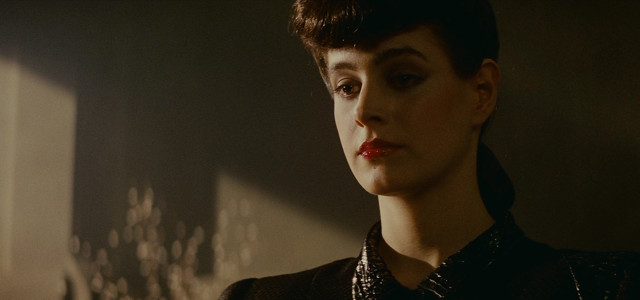
ORIGINAL SIN #3
Plot holes
As you'd expect of any Hollywood movie from the 1970s on up, the future is as polluted, corrupt, hopeless, and nihilistic as you could imagine, which makes the concept of a mass migration of humanity willing to become pioneers and risk everything on off-world colonies an appealing alternative.
What we're left with in BLADE RUNNER are the humans who remain on earth. They were tested, judged, and found wanting: they know they are dregs. They're too old or not physically fit enough to be colonists. They live with the proof that their lives are hopeless dead-ends.
Despite the mass exodus there aren't enough humans to go around to do the hard work of terraforming and building the infrastructure on the new worlds, and that's where, astoundingly, the non-automated society of artificial humans - Replicants - come in as the slave labor.
As we've seen in 2019, we don't need labor robots that are shaped like humans, we need robots that are small enough to get into places a humanoid can't go. We need robots that are big enough to use in construction where a humanoid or humanoids would be too small to be useful.
The only 2019 robots being built to look like humans in 1982's future that actually happened, are those built for sexual pleasure.
Replicants then, are Dr. Eldon Tyrell's artificial evolutionary alternative. "More human than human", Tyrell tells Deckard, "is our motto."
That extraordinarily succinct summation tells us everything we need to know for the rest of the movie, both explaining what we see and hinting at Tyrell's hidden iceberg beneath his surface.
There's a gulf between consumer need and what Tyrell was selling.
Creating such an incredibly expensive alternative of human beings instead of computerized automatons programmed and run by the colonists - one with dangers so high that they've been made illegal - is so unusual as to be an otherwise massive plot hole (if a mere replicant owl is expensive, how much more must a replicant human be?).
And whew! Are there plotholes -
The fact that the Tyrell Corporation can continue to exist well into 2019 after their product was made illegal soon after the murderous 2011 uprising is more bizarre.
The fact that, despite the Tyrell Corporation having no product to sell, Vendor businesses still continue to make various body parts for Tyrell (Joe Turkell: TORMENTED, THE BLOODY SLAYING OF SARAH RIDELANDER, THE SHINING, THE DARK SIDE OF THE MOON), so his company is apparently buying them.
Further, like the replicant eyeball making Hannibal Chew (James Hong: GODZILLA: KING OF THE MONSTERS, THE HUMAN VAPOR, THE SATAN BUG, DESTINATION INNER SPACE, COLOSSUS: THE FORBIN PROJECT, BIG TROUBLE IN LITTLE CHINA, SHADOWZONE, THE SHADOW [1994], TANK GIRL, THE GHOST [2001], THE DAY THE EARTH STOOD STILL [2008], R.I.P.D., BEAST MODE, DROPA), they run - what should be their illicit business - right out in the open.
Moreover, an old man like Chew creates eyes individually by hand, instead of a rapid assembly line. So such Replicants should be so far and few between they cannot possibly be cost effective, especially with a 4 year life-span.
There's so much more and the questions keep piling up. For example, since you program any memories into the Replicants that you want, why wouldn't you give them a debilitating revulsion to killing or even harming humans?
WTF?!?
For answers to all this I took a dive into the Home Video Extras. Specifically, the Director's Commentary by Ridley Scott.
This is Ridley Scott's preferred edit, Final Cut of the film remastered in 4K as well as audio enhancement as well as some other tweaks. Tweaks: not a reshot in cgi version of the movie.
Ridley Scott says in commentary that the claim he was forced to use voice-over is rubbish. Scott originally wanted it, it just didn't work. Harrison Ford never liked it and Scott eventually agreed.
Ridley is open about his errors and what he is proud of in the movie. He was experimenting with a film medium that, at the time, seemed wrung dry of further experimentation in an understandable narrative.
Yet Ridley was able to succeed on a budget he considered too small, against a backdrop of producers that micro-managed (according to Scott) as they questioned nearly every creative move Scott wanted to make.
Scott felt he had to take a committed stand on pretty much every creative thing he envisioned. Listening to Ridley, I got the feeling that he was forcing the producers to defeat his vision or back down. After the success of ALIEN, Scott felt he'd earned the right to be trusted.
More than that, Scott felt that he was laying the groundwork for a BLADE RUNNER franchise. There are many story elements he intentionally left open to tease into the sequel.
Finally, Ridley answered the age old fan question: Is Deckard a Human or a Replicant?
Most directors are lucky to have one cinematic masterpiece in their entire careers, Ridley Scott made two and BLADE RUNNER was his second.
5 Shriek Girls





This review copyright 2020 E.C.McMullen Jr.

|
| DRESS NICE | |
| YOU MIGHT ALSO ENJOY (Sub-Section: THEY LIVE AMONG US!) |
||
 |
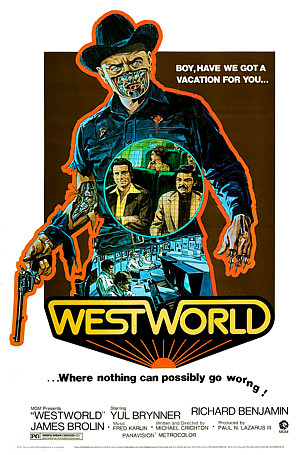 |
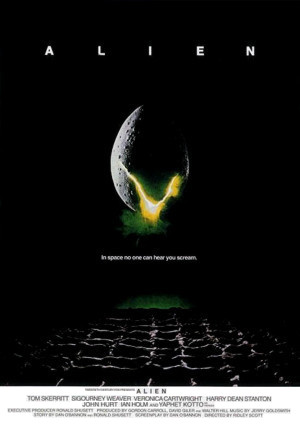 |
| THE MATRIX MOVIE REVIEW |
WESTWORLD MOVIE REVIEW |
ALIEN MOVIE REVIEW |
FEO AMANTE'S HORROR THRILLERCreated by:E.C.McMullen Jr. FOLLOW ME @ |
| Amazon |
| ECMJr |
| Feo Blog |
| IMDb |
| Stage32 |
| Twitter X |
| YouTube |
| Zazzle Shop |
